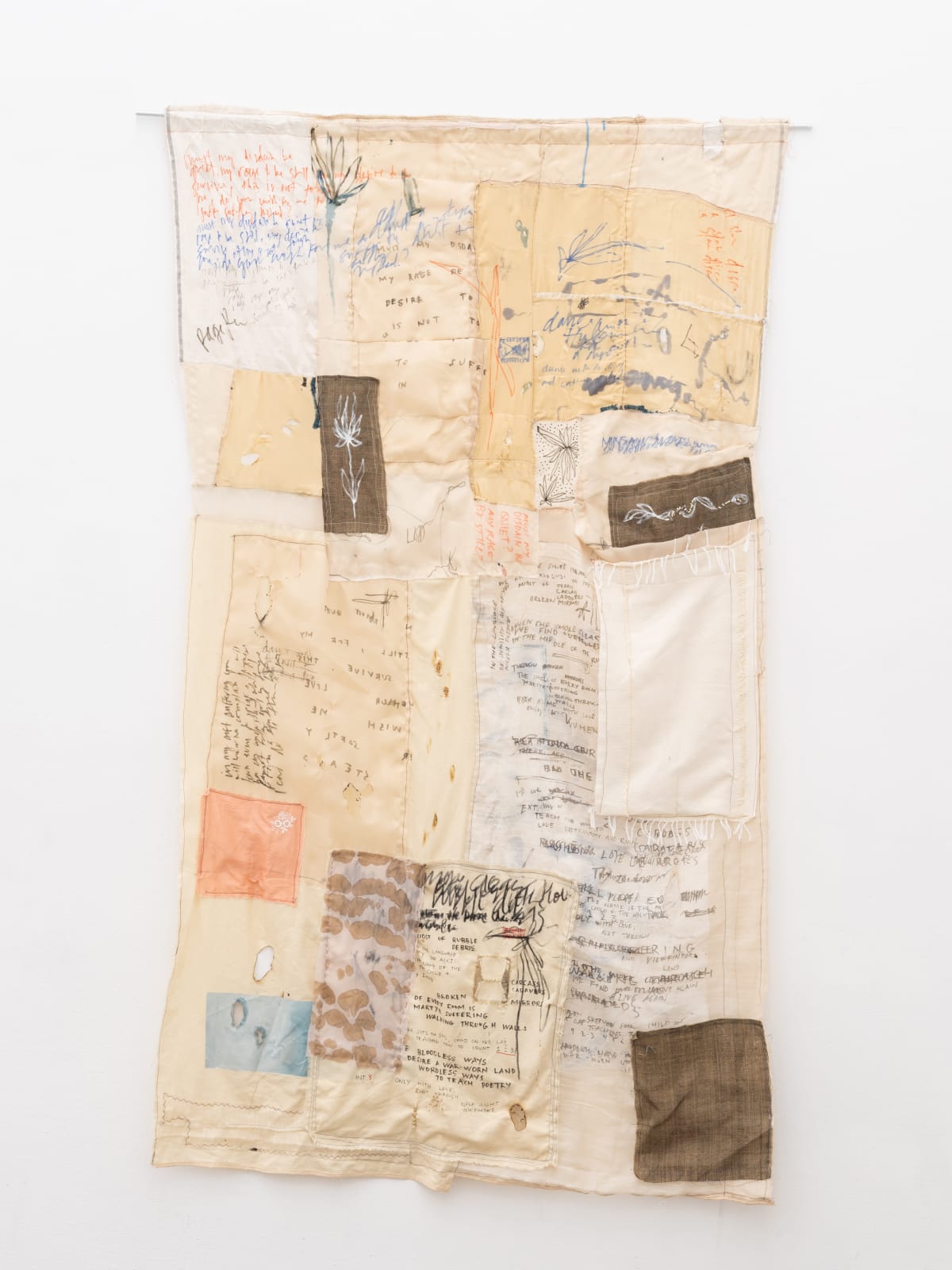Augustine Paredes Philippines, b. 1994
Lamentations 1, 2024
Piña silk, inabel weave, organza, abaca, chiffon, linen, charcoal and acrylic
Commissioned by Art Jameel
Commissioned by Art Jameel
224 x 137 cm
88 1/4 x 54 in
88 1/4 x 54 in
Courtesy of the Artist and Lawrie Shabibi
Several types of fabric have been stitched together to create each textile piece in Lamentations, or Panaghoy in Filipino, each material carrying its own cultural and historical significance. Similar to...
Several types of fabric have been stitched together to create each textile piece in Lamentations, or Panaghoy in Filipino, each material carrying its own cultural and historical significance. Similar to the journey of a migrant, the materials tell their own story. The chiffon and linen were sourced from Indonesia and purchased in Dubai, while the piña fabric (a traditional fabric produced from pineapple leaves) was sourced from the Philippines, and then sent from Dubai to Germany, where the artist currently works.
Augustine connected with his own history through the process of making Lamentations, experimenting with weaving techniques such as inabel, a style native to Ilocos Norte, an area where his ancestors are from; and callado, a technique that was said to be introduced to the Philippines by the Spanish in the colonial era. Callado involves removing fibres from a woven fabric and reworking whatever is remaining to create new details. Similarly, Augustine employs a dramatic and violent technique by burning the fabrics. At times he guides this process, while also allowing the material to have its own agency. He achieves this by applying acetone to the fabric and setting it on fire, letting the fire burn its own path through the material.
Lamentations connect with the body through its folds and creases, and flesh-like colour, exposing the textiles’ flaws and imperfections: ink bleeds through layers, stitches are not hidden and there is rawness to its appearance, yet the work feels honest and intimate.
Augustine connected with his own history through the process of making Lamentations, experimenting with weaving techniques such as inabel, a style native to Ilocos Norte, an area where his ancestors are from; and callado, a technique that was said to be introduced to the Philippines by the Spanish in the colonial era. Callado involves removing fibres from a woven fabric and reworking whatever is remaining to create new details. Similarly, Augustine employs a dramatic and violent technique by burning the fabrics. At times he guides this process, while also allowing the material to have its own agency. He achieves this by applying acetone to the fabric and setting it on fire, letting the fire burn its own path through the material.
Lamentations connect with the body through its folds and creases, and flesh-like colour, exposing the textiles’ flaws and imperfections: ink bleeds through layers, stitches are not hidden and there is rawness to its appearance, yet the work feels honest and intimate.



